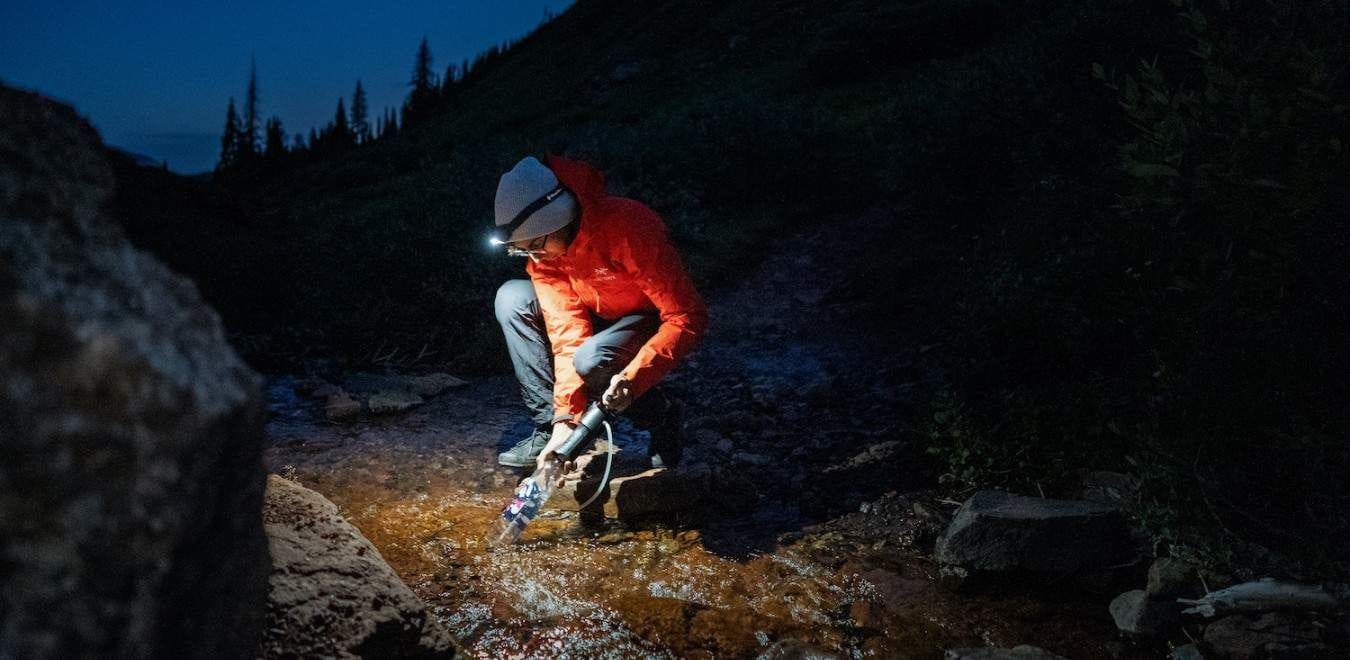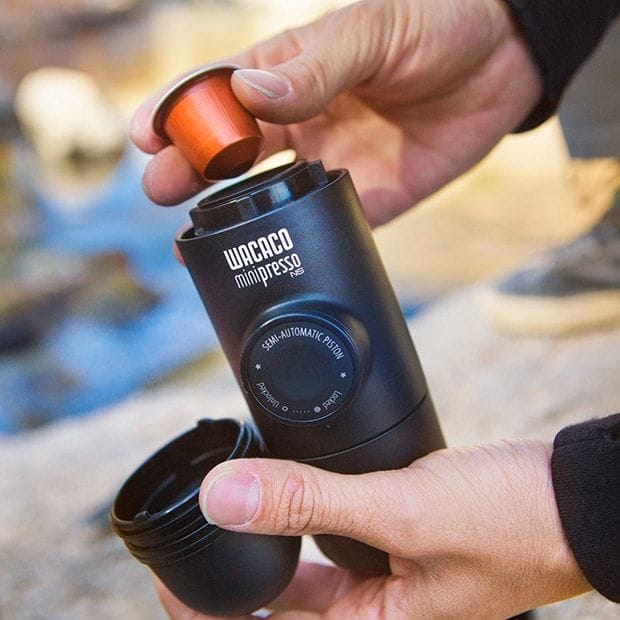If you’re not sure how to get started with hammock camping, then you’ve come to the right place. In this article, we walk you through everything you need to know about hammock camping for beginners. Whether you’re looking to completely ditch your tent or simply want to familiarize yourself with another option, read on!
In a hurry? Skip directly to your question :
Why Should You Hammock Camp?
Let’s face it, you’ve spent most of your camping life in a tent on the ground. And so far, it’s worked out pretty well. So if it ain’t broken, why fix it? Below, we discuss hammock history, as well as some of its advantages and disadvantages when compared to traditional tent camping.
What is hammock camping?
Hammocks were first developed by the early inhabitants of Central and South America. Given the immense volume of tropical creatures that could kill you, hammocks provided folks with some extra defense while asleep.
It was an elegantly simple solution to a deadly problem; woven tree bark or twine served as a sleeping surface, while a piece of rope on either end was secured to a tree. This created an elevated platform that put a welcome distance between the sleeper and the poisonous insects/hungry animals roaming the jungle floor.
It’s believed that hammocks first appeared in Europe in 1492, after Christopher Columbus brought some back to Spain from his journey to the Bahamas. Over time, it became the preferred sleep system for sailors and soldiers alike.
Fast-forward to today and hammocks have become a global phenomenon. You can find heavy canvas hammocks adorning home gardens, classic rope hammocks strewn around beach resorts, and ultralight hammocks slung along the trail. But why are they so popular?
Advantages Compared to Tents
When it comes to camping, tents have long been the default option. They offer protection from the elements and bugs, are lightweight, and offer spacious interiors. So why consider switching from a tent to a hammock? Here are a few advantages.
A SENSE OF WEIGHTLESSNESS
Whereas tents keep you on solid ground, the elevated nature of a hammock gives you a sense of weightlessness. Many campers find this relaxing and even claim that inducing a slight rock from side to side can help them drift off.
NO NEED FOR FLAT OR CLEARED GROUND
One of the major drawbacks of tent camping is the need for flat, cleared ground. We’ve all had the experience of pitching a tent on an ever-so-slight incline. Next thing you know, you wake up with your body bent into a sloping corner.
Hammocks, on the other hand, can be pitched on any gradation, making them a great choice when travelling through more rugged terrain.
DOUBLES AS A CAMP CHAIR
Instead of hauling a camp chair into the backcountry, you can simply use your hammock as a comfy seat by sitting up in it. In fact, depending on your particular hammock and tree setup, it can even work as a love-seat or couch.
FASTER SETUP
Veteran hammock campers are notorious for being able to set up their sleep system in just a couple of minutes. That’s partially because they don’t need to spend any time clearing an area to pitch their tent on. It’s also because there are only two straps involved in the setup, as opposed to several stake-out points and guylines. Even with the optional rain tarp, the hammock set-up is still faster.
RAIN & WATER PROTECTION
There’s nothing worse than tent camping on wet ground. Oh, wait—there is: Tent camping during a heavy rainfall. Heavy rains can lead to water penetration, usually by overflowing the bathtub floor. This means a lot of wet gear and a much heavier pack in the morning. Hammocks bypass this nuisance altogether—just make sure to properly set up your rain tarp.
LEAVE NO TRACE
Compared to tent camping, hammock camping leaves less of an impact on the environment. Inevitably, pitching your tent on the ground requires a certain amount of crushed plants. Not so with hammocks.
Additionally, you’ll notice that the suspension straps used with a hammock are quite wide. This helps distribute pressure and minimize damage to the tree trunks.
STARRY NIGHT
On a clear night, you can enjoy an unobstructed view of the heavens above. Definitely not a common tent feature.

Disadvantages Compared to Tents
WEIGHT
While it’s true that hammocks are generally a bit heavier than modern tents, this largely depends on which models you’re comparing. Overall, hammocks weigh less for their price-point.
CHILLY BOTTOMS
Tent campers lose precious body heat through the ground. But hammock campers lose even more of that body heat to the surrounding environment. This isn’t such a big deal—just be sure to pack a warmer sleeping pad than you would while tent camping.
TREES
One nice thing about tents is that you can pitch them in an open field. Hammocks, on the other hand, are restricted to wooded areas.
COMFORT
This comes down to personal preference, but in the interest of being thorough, it should be noted that some people simply can’t get comfortable in a hammock.
LEARNING CURVE
While only a temporary disadvantage, it can take time to adjust to hammock camping. This includes everything from picking the right trees, setting it up at the right height and angle, and falling asleep in it. Many beginner hammock campers feel nostalgic about the spacious interior that their tent provided.
WHAT DO YOU NEED FOR HAMMOCK CAMPING?
Before setting off into the woods with your neighbour’s backyard hammock in tow, let’s discuss some of the things you’ll actually need on the trail.
Complete Camping Hammock Kit
As the name suggests, complete camping hammock kits come with everything you need. This typically includes a hammock, bug net, suspension accessories (loops, ridgeline, carabiners, tree straps), rain tarp, stakes, and a few stuff sacks for storage.
Though less customizable, these kits offer better value than purchasing each item separately. It also saves you time. Of course, you’ll still need to purchase your own sleeping pad, sleeping bag, and pillow.
If you’re a true hammock novice, a complete kit is an excellent way to get started. It allows you to discover whether hammock camping is right for you and, if so, which pieces of gear you’ll want to upgrade down the line.
Homemade Kit
This is the DIY method for hammock camping. Though more time-consuming, you can drill down on exactly which accessories you want for your setup. This is best suited for campers with at least some experience with backcountry hammocks.
HAMMOCK
In terms of gear, a hammock refers to both the hammock itself and some of its accessory parts. For instance, many hammocks come equipped with their own suspension system and bug net.
SUSPENSION STRAPS
Suspension straps are used to connect the ends of your hammock to a tree. It’s essentially a wide, durable strap with daisy-chain webbing. Though many hammocks come with their own suspension straps, you can always choose to upgrade.
Take note that you should never use bare rope. Not only will it have a lower tensile strength, but you risk damaging trees.
BUG NET
If your hammock doesn’t already include a zippered bug net, it’s strongly recommended that you get one. Not only will it protect you from obnoxious flies and mosquitoes, but you’ll also avoid some potentially dangerous spider bites.
RAIN TARP
Though not necessary in fine weather, a rain tarp is absolutely essential. This waterproof layer can be pitched in an A-frame above your hammock using tarp clips. The tarp should be big enough that the base exceeds the width of your hammock. This will prevent water from dripping on you during a storm.
SLEEPING BAG OR TOP QUILT
Just like with tent camping, you’ll need a sleeping bag to stay warm at night. For hotter nights, you could opt for a simple, lightweight sleeping bag liner instead. On very cold evenings, consider combining both a bag and liner.
Need more inspo? Check out our favourite sleeping bag picks for 2021.
One common alternative to a sleeping bag is the top quilt. Quilts are similar to sleeping bags but with the hood and back portions removed. Surprisingly, this has little to no effect on its R-value. This is because the back and hood section of a sleeping bag are compressed when in use. Thus, the insulating material can’t actually create air pockets to keep you warm.
SLEEPING PAD OR UNDERQUILT?
Though you won’t be laying on bumpy terrain while hovering in a hammock, you’ll still need some kind of sleeping pad or underquilt. This serves two purposes. First, it creates an insulating barrier, preventing precious body heat from escaping through your back. Second, the right sleeping pad can add some much-needed support.
Here’s a pro tip: If you choose to go with an inflatable sleeping pad, don’t inflate it all the way. Allowing your pad a bit of sag helps it better conform to the shape of your hammock.
HIKING BACKPACK
Of course, you’ll need a place to store and carry all this gear! This is where a backpack comes in. Check out our huge selection of hiking backpacks or get inspired by our top picks for 2021.
- Lorem ipsum dolor<\/li>
- Lorem ipsum dolor<\/li>
- Lorem ipsum dolor<\/li><\/ul>","_id":"cc9bf8f"},{"feature":"
- Lorem ipsum dolor<\/li>
- Lorem ipsum dolor<\/li>
- Lorem ipsum dolor<\/li><\/ul>","_id":"e3aac3b"}],"single_product_id":null,"cta_1_url":null,"cta_2_url":null,"credit":null,"limit":null,"collection_link":null}
HOW TO SET UP A HAMMOCK FOR CAMPING
Now that you’ve got your hammock, there’s a few things you should know about setting it up. Here’s a quick guide to get you started. Just follow these five simple steps and you’ll have your wilderness home up and ready in just minutes.
1. Choose the right trees
It all starts with finding the right spot. Whether it’s on a steep mountainside or by the side of a tranquil lake, you’re going to need trees! When looking for the perfect trees to suspend your rest-nest, pay attention to their size and distance apart.
Ideally, the trees should be mature enough to withstand your weight in the hammock without leaning forward. In terms of distance, anywhere between 10-15 feet apart is considered good. The length of your hammock and personal preference for sag will determine the exact amount. Additionally, the daisy chain on your suspension straps will provide you with some flexibility if the trees are somewhat further away or closer together.
2. Adjust the hammock angle and height
There are two measurements you need to consider when pitching your hammock. These are pitch angle and height. (Don’t worry—this doesn’t require any math skills.) Just remember that the perfect hammock height is roughly 18 inches from the ground. This is the seat height of an average chair.
Meanwhile, your suspension straps should be secured at a height of about 48 inches from the ground and have an angle of 30 degrees. This angle provides the perfect amount of force because, well…physics.
Remember not to over tighten your suspension straps, as this will unnecessarily increase the pressure on both the trees and your straps.
3. Set up a bug net
As previously mentioned, many hammocks come equipped with a zippered bug net that surrounds the top portion of your hammock. In the absence of an integrated bug net, consider purchasing an aftermarket one. Aftermarket bug nets are usually large enough to drape high above your hammock and onto the ground.
4. Set up a rain tarp
Once your hammock and bug net are all set up, prepare your rain tarp. There are many ways to pitch a tarp, but here’s a simple method to configure an A-frame.
Above your suspension straps, fasten the tarp clips and extend a ridgeline taut between both trees. Then, secure the clips to the outside of the tarp. Make sure you center the ridgeline above the midline of your hammock. Now, using the guylines, simply stake out each of the four corners of the tarp.
5. Keep essentials and snacks nearby!
There’s nothing worse than stumbling out of your hammock in the pitch darkness, unable to find your headlamp or toilet kit or rain jacket. To avoid this, make it a habit to always keep the gear you’ll need within arm’s reach.
Before bed, have some easy-to-reach snacks set up, too. Make sure not to keep any food or other perfumed items nearby once you actually hunker down for the night. Tie everything up in a bear bag and hang it at least 100 feet away from the nearest campsite. Not only will this prevent an undesired bear encounter, you’ll also discourage rodents from rummaging through your pack!

HAMMOCK CAMPING TIPS: SETTING UP FOR SUCCESS FOR YOUR FIRST TRY
As we mentioned above, one of the disadvantages to hammock camping is the steeper learning curve. Thankfully, much of this can be mitigated by following a handful of simple tips.
Backyard before big adventure
So your hammock arrived in the mail and you’re raring to go. But, before you do, test it out in your backyard or a nearby park. You’ll want to make sure you can set it up with ease and troubleshoot any issues that may arise in the process.
Bring backup gear
While we don’t suggest bringing along a whole other sleep system, it’s useful to carry some of the key components that can be easily lost or broken; an extra carabiner, for instance, or a tree strap. Additionally, you should carry a pocket-size repair kit for any unexpected rips or tears you’ll need to mend in the field.
If all else fails, you can always throw your tarp, sleeping pad, and sleeping bag on the ground and do some cowboy camping (weather permitting, of course).
Sleeping off-center
Though unintuitive, sleeping off-kilter is considerably more comfortable than sleeping perfectly aligned in the center of your hammock. Simply angle your head slightly to one side and angle your feet slightly to the other. By extending the horizontal wings of the hammock, you’re creating a tauter and flatter surface to lay on.
OTHER ALTERNATIVES TO CAMPING TENTS
Besides tents and hammocks, you might be wondering if there are any other alternative shelter systems. Below, we discuss two systems. The first is a minimalist backcountry option, while the second is suited for relaxing frontcountry experiences.
Tarp Camping
A popular option among ultralighters, tarp camping is a great way to enjoy the wilderness without packing much weight. It simply consists of pitching an A-frame tarp between two trees and setting up your sleep system on the ground beneath it.
Tree Tents
Something of a novelty, tree tents have made their mark over the last few years. In a nutshell, a tree tent is a normal looking tent that is suspended above the ground like a hammock. Instead of two straps, however, tree tents usually employ three or more for better stability.
What makes tree tents so unique is that they can be set up above water or overlooking a breathtaking view. While they are a much heavier option than both hammocks and tents, they offer hammock campers a more spacious bedtime experience.
That said, between its hefty weight, lengthy setup time, steep learning curve, and the need for several well-configured pines, tree tents are recommended strictly for frontcountry camping. To see it in action, check out this video.

FAQs for hammock camping
Do you need a special hammock to hammock camp?
Camping hammocks differ considerably from their urban counterparts. The material, weight, packability, and weather-resistance are all optimized for rugged backcountry conditions. Even if you buy the cheapest hammock online, make sure it’s intended for camping.
Is hammock camping comfortable?
Overall, hammocks tend to be more comfortable than tents. Hammocks provide campers with a supportive and svelte surface to lay on, whereas tent camping is only as comfy as the ground beneath it. Whether it's rocks, twigs, or uneven terrain, ground camping always comes with a handful of bumps and bulges.
Is hammock camping safer than tent camping?
Both hammock and tent camping are as safe as you make them. When it comes to hammocks, you want to make sure you have the appropriate gear for a particular environment. Likewise, you want to be conscientious of where you choose to set up your hammock. Dead, weakened, or small trees are never a good idea and could lead to injury.
Is hammock camping colder than tent camping?
In general, hammock camping is colder than tent camping. Though tent campers lose heat through the ground, hammock campers lose substantially more heat to the surrounding air. Windy nights can be particularly cold, even in 15°C weather. The solution is to invest in a sleeping pad with a high R-value.
Is hammock camping lighter than tent camping for backpacking?
Though there was a time where hammocks were lighter than tents, that time has passed. With the advent of durable, ultralight materials, tents have become increasingly lightweight without sacrificing internal volume. Nevertheless, depending on the model of tent you buy, a hammock can still weigh less—especially for the price.
Where do you store your backpack when hammock camping?
There are two common places to store your backpack while hammock camping. The first spot is literally right beside you on the ground. In the event of rain, make sure your backpack is within the perimeter of your rain tarp. You should keep a pack cover over your bag and also lay it on a piece of plastic in case the ground is already wet.
Keep in mind that vermin may want to inspect your pack during the night. Make sure you hang a bear bag with all your food and other scented items at least 100 feet away. Unzip your pockets to allow any curious creatures to do a little exploring—that way, they don’t chew through your backpack.
Alternatively, you can attach your backpack to either the head or foot of your hammock. Keep a small carabiner handy and hang it directly from your hammock’s suspension strap. And don’t worry about the weight. Many of these systems are designed to support several hundred pounds.
Conclusion
Well, there you have it—the complete beginner’s guide to hammock camping. Even if you decide not to switch up your shelter system, we hope we’ve piqued your interest enough to give it a shot.
For those of you who still think tent camping is the way to go, check out our favourite camping tents and favourite hiking tents of 2021!







